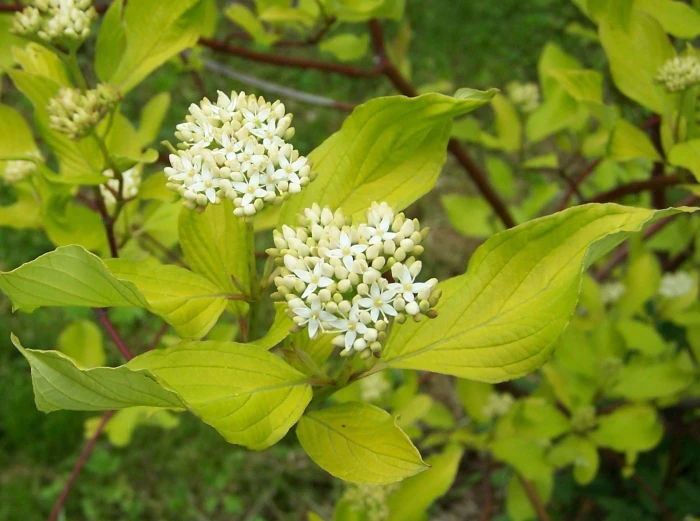Tartarian Dogwood
(Cornus alba)
Tartarian Dogwood (Cornus alba)
/
/

Opioła Jerzy (Poland)
CC BY 2.5
Image By:
Opioła Jerzy (Poland)
Recorded By:
Copyright:
CC BY 2.5
Copyright Notice:
Photo by: Opioła Jerzy (Poland) | License Type: CC BY 2.5 | License URL: https://creativecommons.org/licenses/by/2.5 | Uploader: Selso | Publisher: Wikimedia Commons | Title: Cornus_alba_a2.jpg | Notes: |












































































Estimated Native Range
Climate Requirements for Dhaka, Bangladesh
| This Plant | Your Site | Plant Suitability for Your Location | ||
|---|---|---|---|---|
| • Precipitation | 9" - 121" | 85" | Aquatic | Aquatic |
| • High Temp. | 60°F - 93°F | 93°F | Your summers may be too hot for this plant. | Too hot |
| • Low Temp. | -53°F - 45°F | 54°F | OK, but your winter temperatures are warmer than normal for this plant | OK |
This plant may not grow well at your location - your precipitation is too high.
Summary
Cornus alba, commonly known as Tartarian dogwood, is a deciduous shrub native to forest margins, riverbanks, and open woodlands of Siberia, northern China, and Korea. It can also adapt to a variety of disturbed habitats. This species typically grows to 3 meters (10 feet) in height and spreads through suckering, potentially forming thickets. The Tartarian dogwood is characterized by its bright red stems that are particularly noticeable in fall and winter, and its white to blue-tinted berries. The variegated cultivar ’Elegantissima’ has leaves with white margins, adding to its ornamental value. Flowering occurs in late spring to early summer, producing small, creamy-white flowers that are followed by the fruit.
Tartarian dogwood is valued for its striking winter stem color, which provides landscape interest during the dormant season. It is used in urban and residential landscaping for border planting, massing, or as a specimen. The plant is extremely hardy, tolerating temperatures down to USDA Zone 3. It thrives in full sun to part shade and can handle a range of soil types, provided they have good drainage. Pruning older stems to the ground in late winter encourages the growth of new shoots, which have the brightest stem color. It is also resistant to many pests and diseases, making it a low-maintenance choice for gardeners.CC BY-SA 4.0
Tartarian dogwood is valued for its striking winter stem color, which provides landscape interest during the dormant season. It is used in urban and residential landscaping for border planting, massing, or as a specimen. The plant is extremely hardy, tolerating temperatures down to USDA Zone 3. It thrives in full sun to part shade and can handle a range of soil types, provided they have good drainage. Pruning older stems to the ground in late winter encourages the growth of new shoots, which have the brightest stem color. It is also resistant to many pests and diseases, making it a low-maintenance choice for gardeners.CC BY-SA 4.0
Plant Description
- Plant Type: Shrub
- Height: 8-10 feet
- Width: 8-10 feet
- Growth Rate: Rapid
- Flower Color: White
- Flowering Season: Spring
- Leaf Retention: Deciduous
Growth Requirements
- Sun: Full Sun, Part Shade
- Water: Medium
- Drainage: Fast, Medium, Slow
Common Uses
Bank Stabilization, Bee Garden, Bird Garden, Border Plant, Butterfly Garden, Deer Resistant, Erosion Control, Hedges, Hummingbird Garden, Low Maintenance, Rabbit Resistant, Salt Tolerant, Street Planting
Natural Habitat
Forest margins, riverbanks, and open woodlands
Other Names
Common Names: Siberian Dogwood, Red-Barked Dogwood, White Dogwood, Koral-Kornel, Tatarischer Hartriegel, Cornouiller Blanc, Rysk Kornell, Blodkornell, Korallkornell, 흰말채나무, Cornos-Branco
Scientific Names: Cornus alba, Cornus pumila, Cornus hessei, Swida alba, Cornus alba var. sibirica, Cornus alba var. argenteomarginata, Cornus tatarica, Cornus tartarica, Cornus sibirica
GBIF Accepted Name: Cornus alba L.